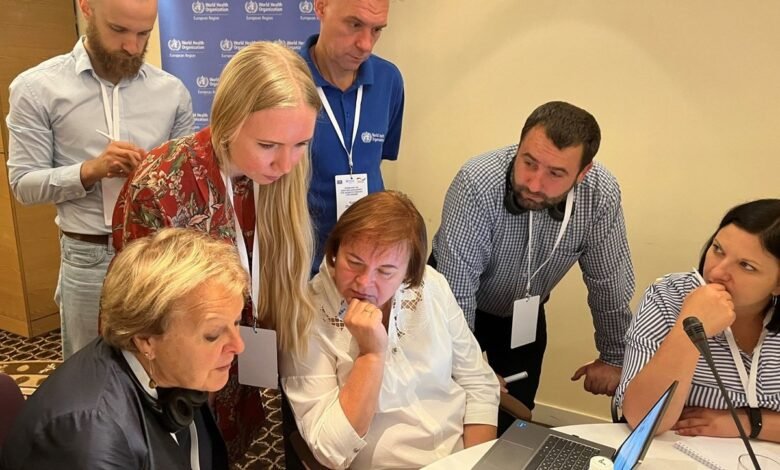Uncovered: Global Secrets of WHO’s Unstoppable Health Risk Assessment Tool!

Exploring the Global Applications of the One Health Joint Risk Assessment Operational Tool (JRA OT)
The world is increasingly understanding the intersection of human, animal, and environmental health, a concept encapsulated in the One Health approach. This perspective emphasizes that the health of people, animals, and ecosystems are interconnected. To facilitate this integrated approach, the World Health Organization (WHO) initiated the One Health Joint Risk Assessment Operational Tool (JRA OT). In this blog post, we delve into the WHO EPI-WIN webinar dedicated to discussing the global applications of the JRA OT, highlighting its importance, functionalities, and the collaborative efforts necessary to enhance its implementation.
Understanding the One Health Approach
Before we dive into the specifics of the JRA OT, it is essential to grasp the essence of the One Health approach. One Health recognizes that human health is influenced by the health of animals and the environment. Factors such as zoonotic diseases, antimicrobial resistance, food security, and climate change cannot be addressed in isolation. By fostering collaboration among multiple sectors—public health, veterinary medicine, environmental science, and more—stakeholders can work towards a more holistic solution to health challenges that transcend traditional boundaries.
The WHO EPI-WIN Webinar
The WHO’s EPI-WIN initiative focuses on building the capacity to communicate effectively about epidemic and pandemic risks. The webinar focused on the global applications of the JRA OT provided a unique platform for stakeholders to engage, learn, and share insights about better managing health risks through a One Health perspective. Experts from various fields contributed their knowledge, showcasing successful case studies and innovative strategies aimed at improving health outcomes on a global scale.
The One Health Joint Risk Assessment Operational Tool (JRA OT)
The JRA OT serves as a vital resource that aids countries and organizations in conducting joint risk assessments that encompass both human and animal health aspects. By providing a structured methodology, the tool facilitates collaboration among different sectors, enabling them to harmonize their efforts in identifying and managing health risks. The key features of the JRA OT include:
- Structured Framework: The tool offers a systematic approach for assessing risks related to infectious diseases and environmental hazards.
- Multi-disciplinary Collaboration: It encourages stakeholders from diverse fields to work together, combining their expertise to generate comprehensive assessments.
- Customizable Applicability: The JRA OT is adaptable to various contexts, including different geographical settings, types of health threats, and local needs.
- Capacity Building: It promotes skill development among stakeholders, allowing them to conduct assessments independently and efficiently.
How the JRA OT Enhances Health Security
The global landscape of health security is shaped by numerous factors, including emerging infectious diseases, climate variability, and international travel. The JRA OT plays a crucial role in enhancing health security by:
- Early Detection and Response: By integrating multiple sectors in risk assessments, countries can identify potential health threats early and design interventions promptly.
- Strengthening Surveillance Systems: The tool encourages robust collaboration among human and animal health surveillance systems, leading to timely and accurate data collection.
- Policy Development: Data generated through the assessments can inform policy decisions, ensuring that responses are grounded in solid evidence.
- Resource Allocation: Understanding risks across sectors enables better prioritization of resources and funding to areas most in need.
Global Case Studies Highlighting the JRA OT in Action
During the webinar, various case studies were presented to illustrate how the JRA OT has been effectively utilized across different regions. These real-world applications provided valuable insights into the tool’s capabilities and benefits:
Case Study 1: Managing Zoonotic Diseases in East Africa
In East Africa, a collaborative effort between human health, veterinary, and environmental sectors successfully employed the JRA OT to address the threat of zoonotic diseases, which are diseases transmitted from animals to humans. Through joint assessments, stakeholders identified hotspots for disease transmission and implemented integrated surveillance systems that improved their response capabilities.
Case Study 2: Addressing Antimicrobial Resistance in Europe
The European region faced a growing concern regarding antimicrobial resistance (AMR). By utilizing the JRA OT, countries could evaluate the risk factors associated with AMR across veterinary and human health sectors. This comprehensive risk assessment led to the development of coordinated action plans aimed at mitigating the spread of resistance.
Case Study 3: Climate-Related Health Risks in Southeast Asia
Southeast Asia has been significantly impacted by climate change, with increased occurrences of vector-borne diseases. Implementing the JRA OT allowed health authorities to assess the risks associated with altered weather patterns and their influence on disease transmission. This assessment supported the creation of targeted interventions aimed at bolstering community resilience.
Collaboration as a Key Factor for Success
The effectiveness of the JRA OT hinges on collaboration among various stakeholders. During the webinar, experts emphasized the importance of building strong partnerships among government agencies, non-governmental organizations, academia, and private sectors. Successful examples demonstrated that when stakeholders unite their efforts and resources, the impact of joint risk assessments is amplified, yielding improved health outcomes.
Moreover, effective communication is vital in fostering collaboration, ensuring that all parties are informed, engaged, and working towards common goals. The creation of networks and platforms for knowledge sharing can significantly enhance the potential of the JRA OT, promoting solidarity in addressing health threats.
The Future of One Health Joint Risk Assessment
As the world faces an evolving health landscape marked by climate change, urbanization, and emerging infectious diseases, the role of the JRA OT will become increasingly indispensable. Moving forward, it is crucial to:
- Invest in Education and Training: Enhancing the capacity of stakeholders through training initiatives will empower them to utilize the JRA OT effectively.
- Engage Diverse Stakeholders: Ensuring that all relevant sectors are represented will bolster the comprehensiveness of risk assessments.
- Utilize Technology for Data Collection: Incorporating innovative technologies, such as remote sensing and data analytics, can enhance the accuracy and efficiency of assessments.
- Promote Policy Integration: Policy frameworks should be aligned across sectors to facilitate coordinated and effective responses to health threats.
Conclusion
The WHO EPI-WIN webinar provided a vital opportunity to discuss the global applications of the One Health Joint Risk Assessment Operational Tool (JRA OT). By recognizing the interconnectedness of human, animal, and environmental health, stakeholders are better equipped to respond to emerging and re-emerging health threats. The JRA OT serves as an essential resource to facilitate collaborative risk assessments, enhance health security, and ultimately promote a healthier world.
Summary of Key Points
- The One Health approach integrates human, animal, and environmental health considerations.
- The JRA OT is a structured tool for joint risk assessments across different sectors.
- Successful case studies illustrate the global application of the JRA OT in improving health outcomes.
- Collaboration among stakeholders is crucial for the effective implementation of the JRA OT.
- Future efforts should focus on capacity building, stakeholder engagement, technological integration, and policy alignment.





